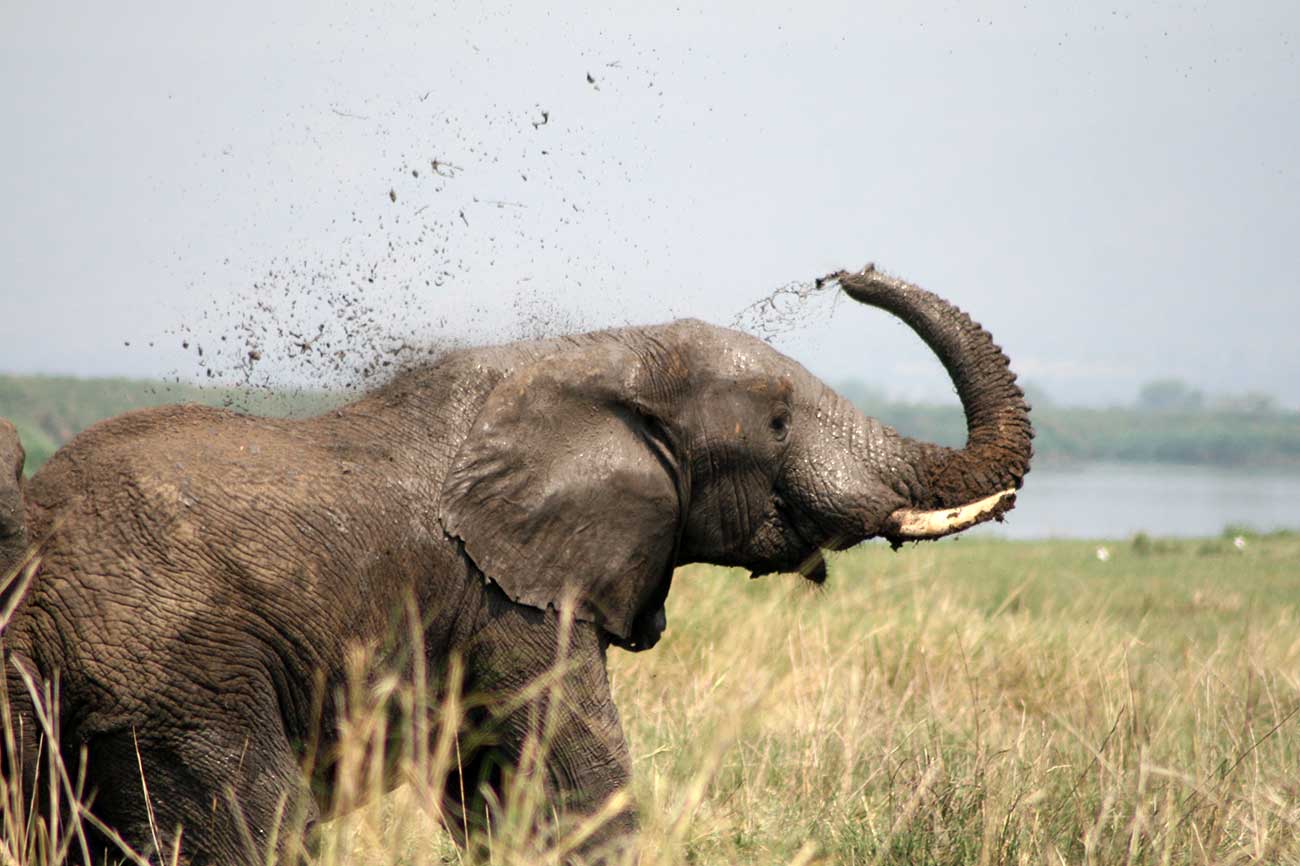
04 Oct Encounter a host of mammal and bird species – Queen Elizabeth National Park
Queen Elizabeth National Park is one of Uganda’s most popular destinations. It sits within the Albertine Rift and spans the equator. The park stretches from the crater-dotted foothills of the Rwenzori ranges to the Ishasha River in the south.
Queen Elizabeth National Park contains a wide variety of habitats. These range from open savannah, rainforest, dense papyrus swamps and crater lakes to the vast Lake Edward. This is reflected in its amazing check-list of 95 mammal species. They include African bush elephants, leopards, lions and chimpanzees, and over 600 bird species, several of which are of global conservation concern. The park also has a rich cultural heritage and there are opportunities for you to meet the local communities and learn more, through their dance, music and crafts.
Features of Queen Elizabeth National Park
- Kazinga Channel – connecting Lake George and Lake Edward, you can take a boat trip along the channel to spot hippos, buffalo, elephant and a range of birdlife.
- Maramagambo Forest – home to chimpanzees, red-tailed monkeys and Bates’s pygmy antelopes, the forest also is home to an extraordinary bat cave.
- Kyambura Gorge – just 11km long, this gorge is home to a small group of chimpanzees, and is also visited by elephants, hippos and giant forest hog.
- Ishasha – down to the south of the Park, you may spot the famous tree-climbing lions in their favourite fig trees.
- Katwe craters – lying just outside the park, these volcanic craters form some spectacular scenery and some lakes have been developed into saltpans.
Activities at Queen Elizabeth National Park
- Boat Cruise
- Balloon flight
- Game Drive
- Predator experience
- Chimp Tracking
- Nature Walk
- Birding
- Tree climbing lions
What you might see at Queen Elizabeth National Park
Animals: elephant, side-striped jackal, cape buffalo, Uganda kob, waterbuck, warthog, giant forest hog, lion, leopard, hyena, topi, sitatunga antelope, chimpanzee, baboons, black and white colobus and other forest primates.
Birds: Shoebill, Grey, Purple and Goliath Heron, Saddle-billed and Yellow-billed Stork, Papyrus Gonolek, Sacred and Glossy Ibis, African Spoonbill, Egyptian Goose, Black Crake, African Jacana, Black-winged Stilt, Collard Pranticles, Grey-capped Warbler, Pied Kingfisher, Amur Falcon, Black-headed Gonolek, Grey-headed Sparrows, Red-headed Lovebirds, Red-eyed and African Morning Dove, African Skimmer, Great White and Pink-backed Pelicans, Grey-headed Gull, Common Sandpiper, Water thick-knee, Senegal, Crowned, Brown-chested, Spur-winged, African wattled, Kittlitz’s and Three-banded Plovers, African Pygmy Kingfisher, Brown-throated Sand Martin, Greater and Lesser Swamp warblers, Carruthers’s cisticola, Black-rumped Button Quail, African Crake, Black Bee Eater, Shining Blue Kingfisher, White-tailed Lark, Marabou Stork, Black-shouldered kite, Hooded, African white-backed, Rüppell’s Griffon, Lappet-faced and White-headed Vultures, Brown Snake Eagle, Bateleur Gabar goshawk, Wahlberg’s, tawny, martial and long-crested eagles, Lanner Falcon, Helmeted Guineafowl, Black-bellied bustard, Red-necked spurfowl, Black and Senegal Coucals, Verreaux’s Eagle Owl, Blue-naped Mousebird, Grey-headed Kingfisher, Madagascar African Hoopoe, Common scimitarbill, White-headed barbet, Lesser Honeyguide, Arrow-marked and black-lored Babblers, Moustached grass Warbler, Fan-tailed grassbird, Trilling, Winding, Stout and Zitting Cisticolas, Common Drongo, Common and Grey-backed Fiscals, Black-crowned tchagra, Sulphur-breasted Bush Shrike, Red-shouldered Cuckoo Shrike, Violet-backed Starling, Yellow-billed Oxpecker, Purple-banded and Scarlet-chested Sunbirds, Compact, Lesser masked and Spectacled Weavers, Red-billed Quelea, Fan-tailed and white-winged Widowbirds, Green-winged Pytilia, Red-cheeked cordon-bleu, Red-billed Firefinch, Common and Fawn-breasted Waxbills, Brimstone Canary, Golden-breasted Bunting, Broad-tailed Warbler and Black Coucal.
Hotels in Queen Elizabeth National Park



